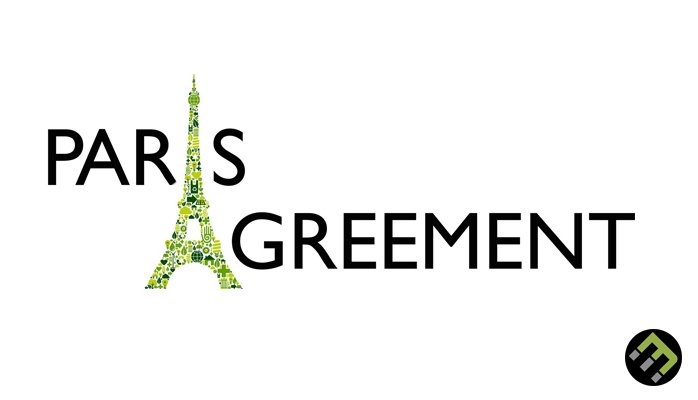In the midst of the Kovid epidemic, there is a good news coming from the environment, climate change, and the impact of all these on the economy. And the news is that the effect of the Paris Agreement is visible in the statements and actions of the countries involved. This is confirmed by the report by Global Consultancy SystemIQ called The Paris Effect, which states that the Paris Agreement is redefining the global economy.

And the most encouraging thing that has come out of this is that since the Paris Agreement of 2015 there has been a boom in investment and adoption of low carbon emission solutions. A new assessment clearly shows that by 2020, regions that account for 70% of global emissions have grown very rapidly since 2020, due to competition in adopting solutions for low carbon emissions. These changes can help bring about a zero-carbon economy that will create 350 million (35 million) jobs in the coming years.
The European Union, UK and US elected President Joe Biden (who jointly make up 30% of global imports), are considering imposing a carbon border tax among themselves.
It is estimated that by the 2030s – the creation of zero carbon economies can be achieved in areas such as renewable energy, energy-efficient buildings, local food systems (ie using only food around you) and restoring land. More than 35 million new direct jobs are going to be created at the level. It is more necessary than ever for post-COVID-recovery. On the other hand, zero-carbon solutions will now be combined with digitalization to rebuild the economy.
More than ten car manufacturers (including Volvo, Renault and Fiat) have committed to EV sales targets for the period between 2020 and 2025. The VW Group plans to invest $ 66 billion by 2024 alone. Maersk and CMA CGM, the world’s biggest names of shipping, are committed to Net Zero by 2050. 40 companies, representing one-third of global cement production capacity, are committed to being carbon neutral by 2050 through the Global Cement and Concrete Association. Dalmia Cement and Heidelberg Cement have separately made commitments to carbon neutral by 2040 and 2050 respectively.
In response to this, Lawrence Tubiana, architect of the Paris Agreement and CEO of the European Climate Foundation, says, “It is clear now that the goals of the Paris Agreement are a reference point for all governments and financial institutions in the world.” The time has come to give impetus to the journey which the world leaders started in 2015. It is clear that global temperatures and emissions are rising, but this assessment gives us hope that the Paris Agreement is doing its job as well.
The dynamics set since the Paris Agreement have created conditions for low-carbon solutions and markets to progress dramatically over the past five years. The agreement – this underlying ‘Shift’ – paved the way for 195 countries to consistently reduce their dependence on fossil fuels. Favorable conditions for everything from electric vehicles to alternative proteins to sustainable aviation fuel have been set.
Countries, cities, regions and companies responsible for more than 50% of GDP have set net zero targets. European Union, U.K. And the real possibility of carbon border tax adjustments by the US elected president Joe Biden (who jointly imports more than 30% of global imports) is already creating a kind of disruption in the market practice for commodities such as steel and aluminum. Huh. The onus on the non-food companies to prove that their supply chains are free of deforestation, the reliable possibility of requirements is changing behavior.
In the same sequence, Nicholas Stern, Professor of Economics and Governance at the London School of Economics and President of the Grants Research Institute on Climate Change and the Environment, states, “We know that inadequate action is big and Expensive climate turns into risk. So intelligent policy makers and investors will avoid doing anything and create targets that create jobs and flexibility in the system. And all this can only be done through a net-zero economy. Huh.”
This shows that as greenhouse gas emissions and global temperatures continue to rise, low-carbon progress in all sectors of the economy is now accelerating. The rapidly falling costs of solar and wind already place better bets than fossil fuels in many markets, while the pace of electric vehicle development has rebounded estimates. By 2030, for sectors that contribute 70% of emissions, we will have competitive low or low carbon solutions including heavy road transport, heavy industry and agriculture.

